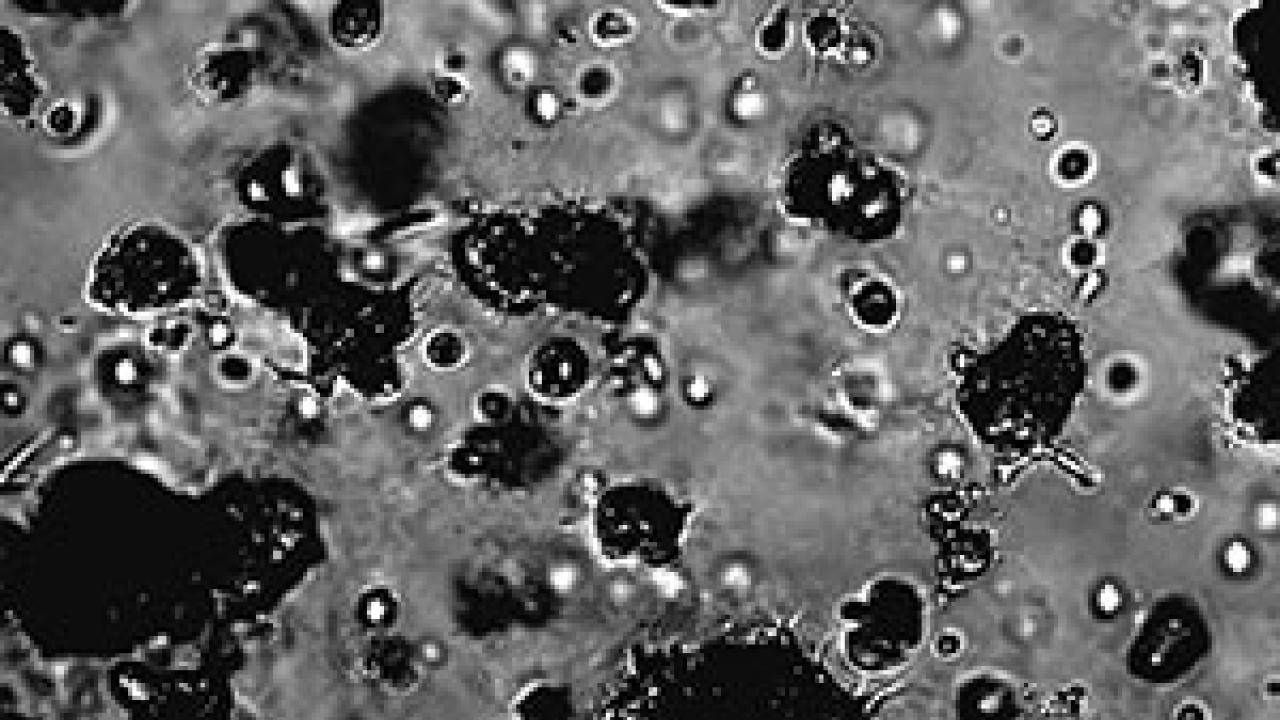
Cancer is a complicated disease, often unpredictable, with multiple methods to invade healthy tissue. In response, researchers are integrating multiple research methods to unravel cancer's convolutions. ICTP physicist Antonio Celani has worked with cancer biologists to investigate one of cancer's odd behaviors through theory, mathematics, and experiment, finding there is considerably less randomness than previously thought to malignant cells' attack; instead, cancer cells are likely responding to a specific chemical that helps clusters find each other.
His research, which was recently published in Scientific Reports, started with one observation, made by biologists studying how abnormal cells can transform into cancer cells and invade surrounding tissues. Invasion implies that cancer cells are spreading out, moving away from each other to conquer the most territory. But instead, the biologists noticed that the cancer cells were collecting together, piling up in masses that grew quickly with more arrivals and dividing cells.
This unexpected behavior presented several key questions: why were the cells aggregating? "Is it totally random, or maybe it's directed; and if it's directed does it provide some advantage to the cells?" says Celani, explaining the main investigation of the paper. Perhaps these malignant cells simply joined together if they happened to run into each other. "If this process were totally random, the higher the density, the faster the process should be," says Celani.
After taking many, many videos through a microscope, the researchers quantified how the cancer cells behave when they are densely packed together or spread far apart. This quantification of the cancer cells' movement revealed something unexpected: there was nothing random about how the cells were moving. The prostate cancer cell line used for the study is typically quite aggressive, quickly moving to invade bones. But individual cells, instead of each spreading out and attacking on their own, first seemed to be actively seeking each other out to make large clusters of cells.
The physics side of the collaboration then came into play, as Celani helped write equations to model the way these cells behaved. The models were based on the known process of chemotaxis, the ability of cells to respond to a chemical gradient. If the cancer cells were responding to a chemical of some sort, it could be any of a huge number of candidates, making it impossible to test for. Modeling what the cells' behavior is with such a chemical and comparing it with the experiment results provides a useful workaround when the chemical itself is unknown. If the cancer cells are each emitting a common attractant, each cell could find the nearest cluster by moving towards the highest density of the attractant.
"The nice thing, from the viewpoint of the physicists, is that this model becomes exactly the same model for the forces between stars distributed randomly in the universe, so it makes a nice link to a problem of classical physics," Celani comments. "Basically, you can map gravity onto these chemical forces." This chemical attraction results in velocities for each cell and cluster, based on what cells and clusters are around them, velocities that can be measured and simulated.
Simulations were the next step used by Celani's group after modeling, to convince their biologist colleagues that there was likely a chemical attractant in play among the cancer cells. Experiments confirmed that the clusters were indeed releasing an attractant, but the identity of the substance proved elusive. The team checked for the usual suspects, including several growth factors, and sorted all the candidates by molecular weight, which allowed for some eliminations. But the long process did not result in a specific culprit from the thousands of candidates.
Whatever it is, the substance and cells' ability to find each other could provide several advantages. Clustering could help the invading cells avoid the attacks of the immune system. Or they might let cancer cells take advantage of a higher level of growth factor in the environment surrounding the cluster, fueling their proliferation.
The clustering of cancer cells was unexpected, and the news that it is directed and purposeful instead of random provides insight into the voraciousness of cancer. The combination of research methods allowed for inventive ways of investigation, and revealing information about how cancer behaves.
The paper, Three-dimensional chemotaxis-driven aggregation of tumor cells, recently appeared in Scientific Reports 5, Article number: 15205. doi:10.1038/srep15205.
--Kelsey Calhoun
















